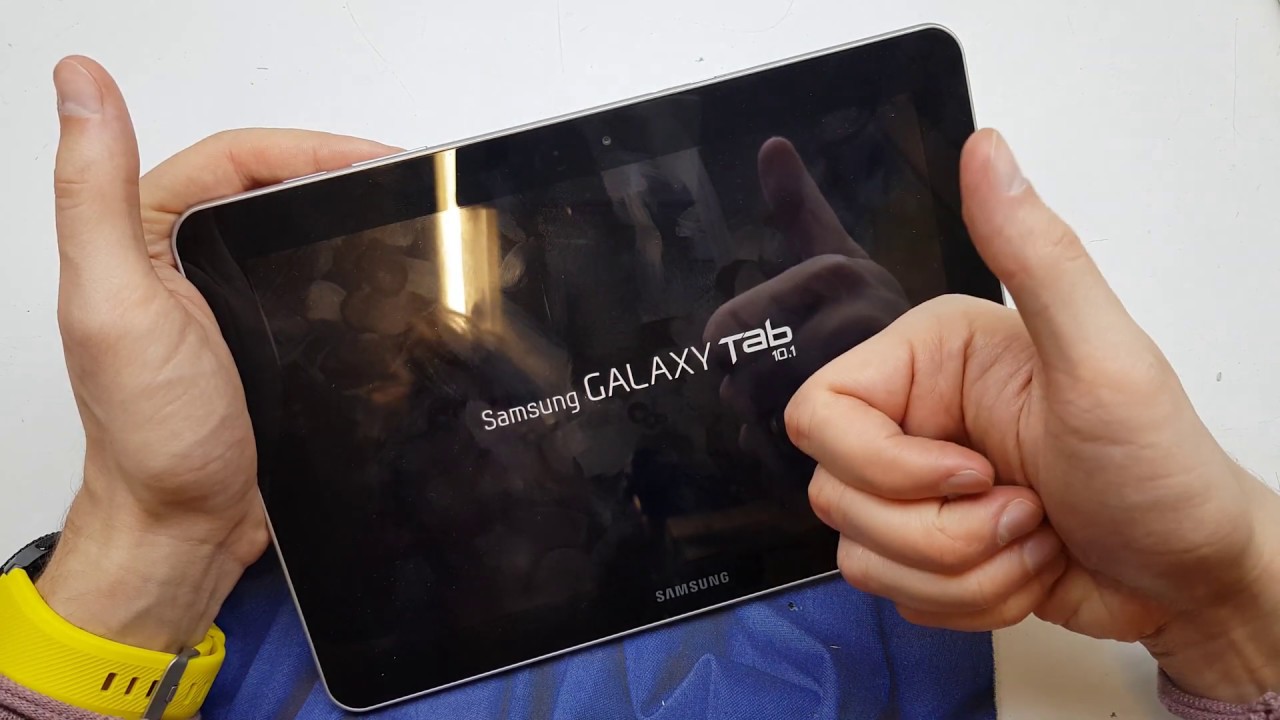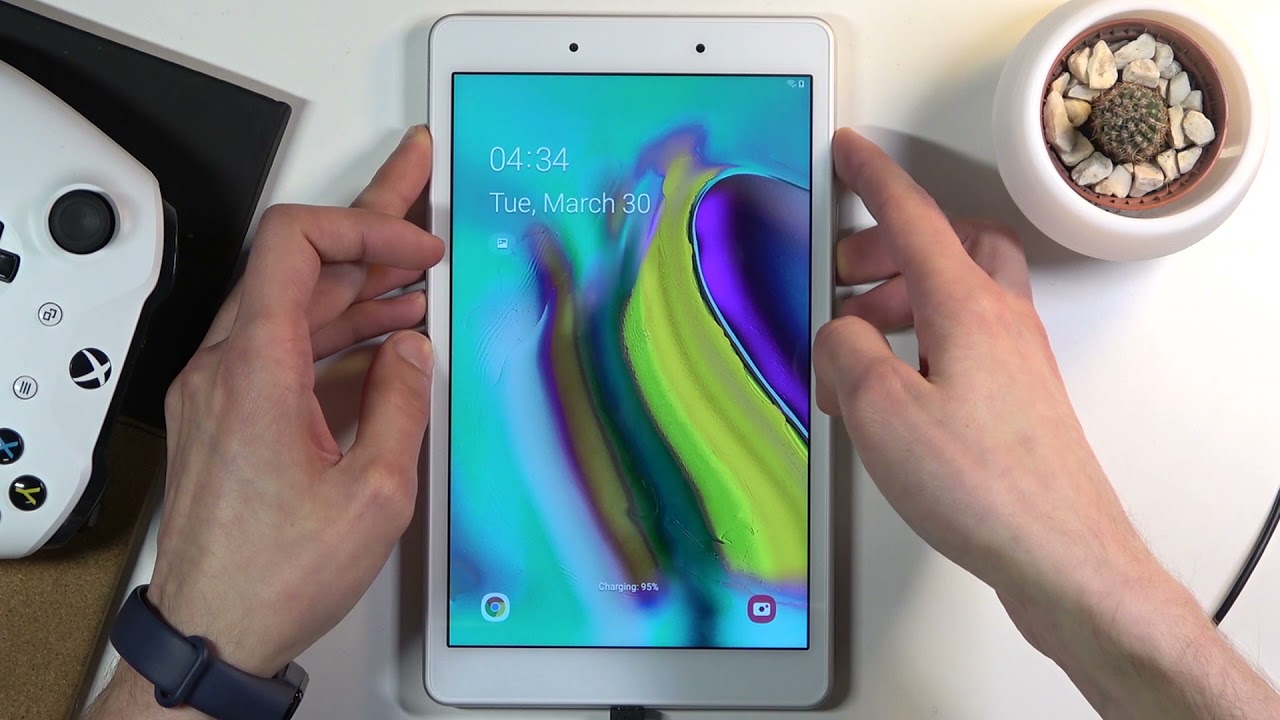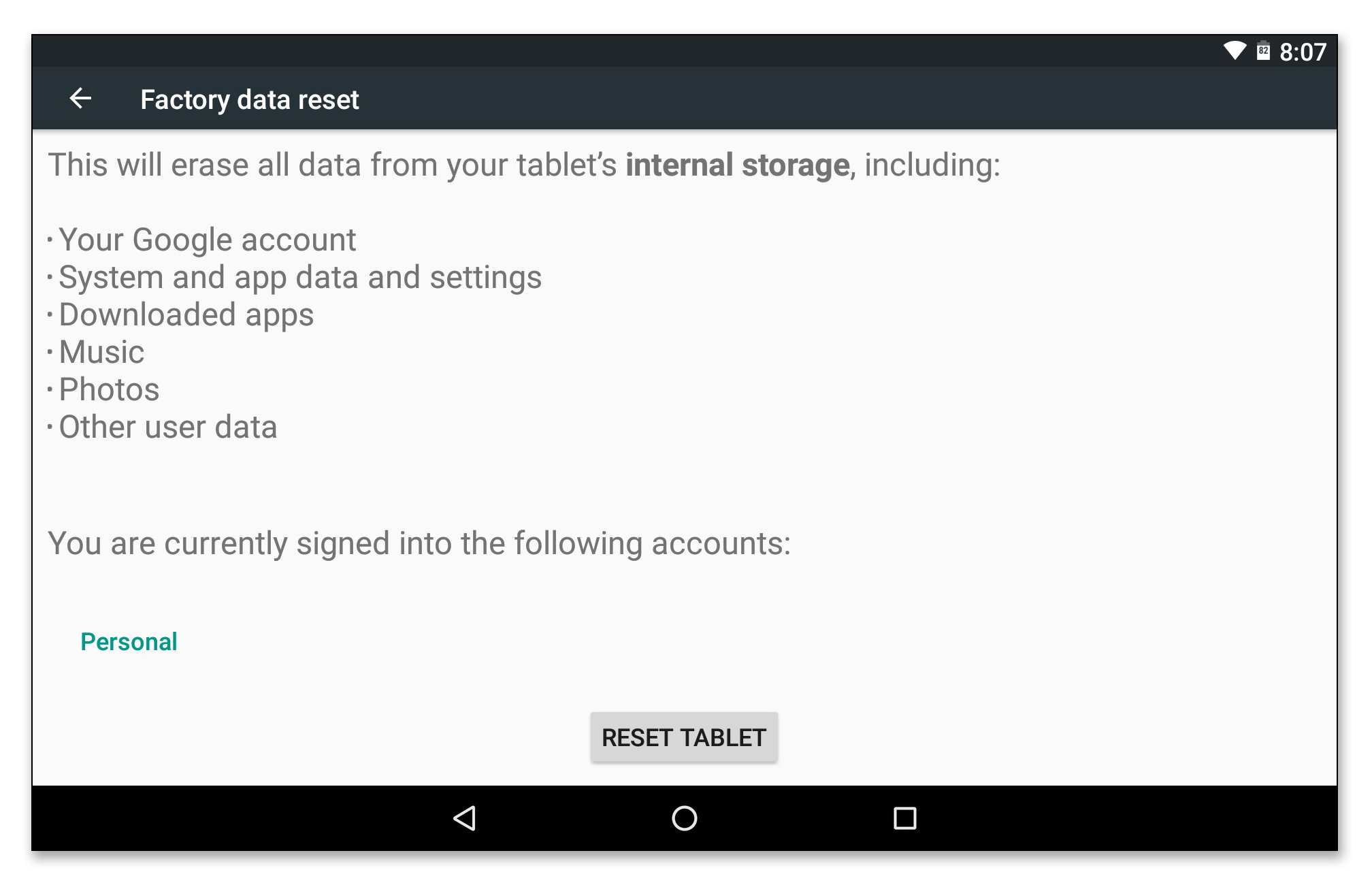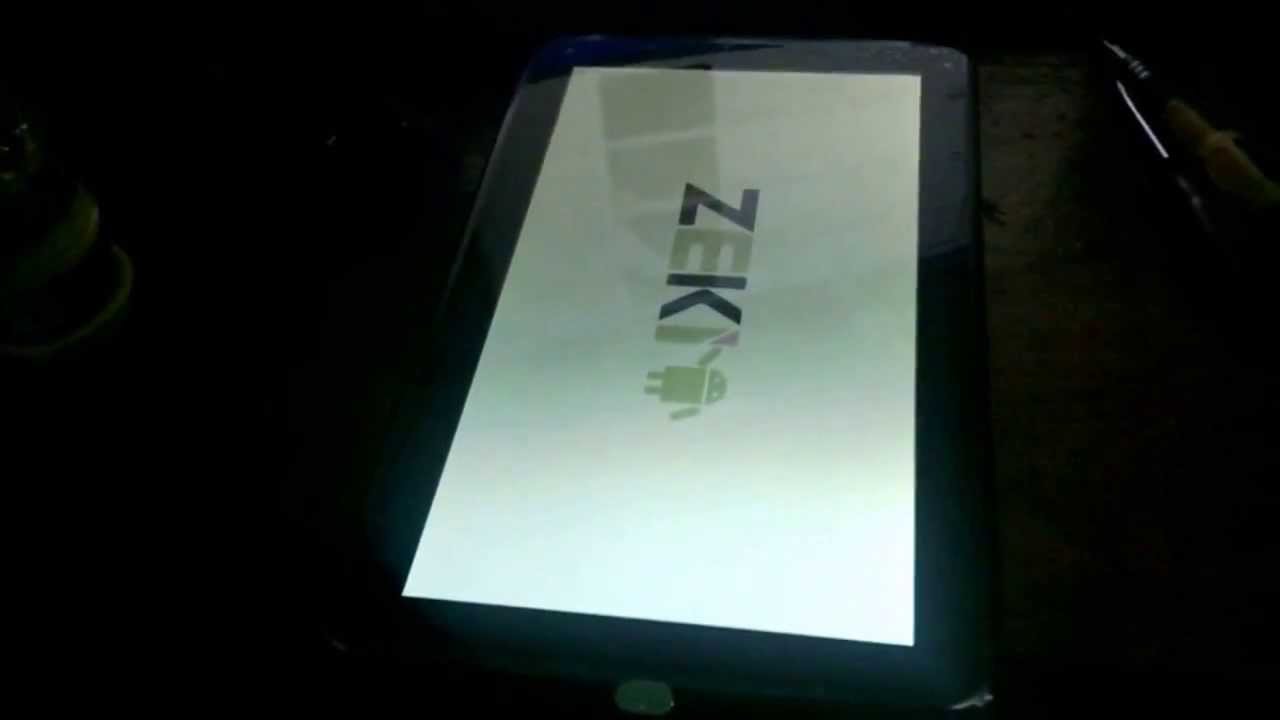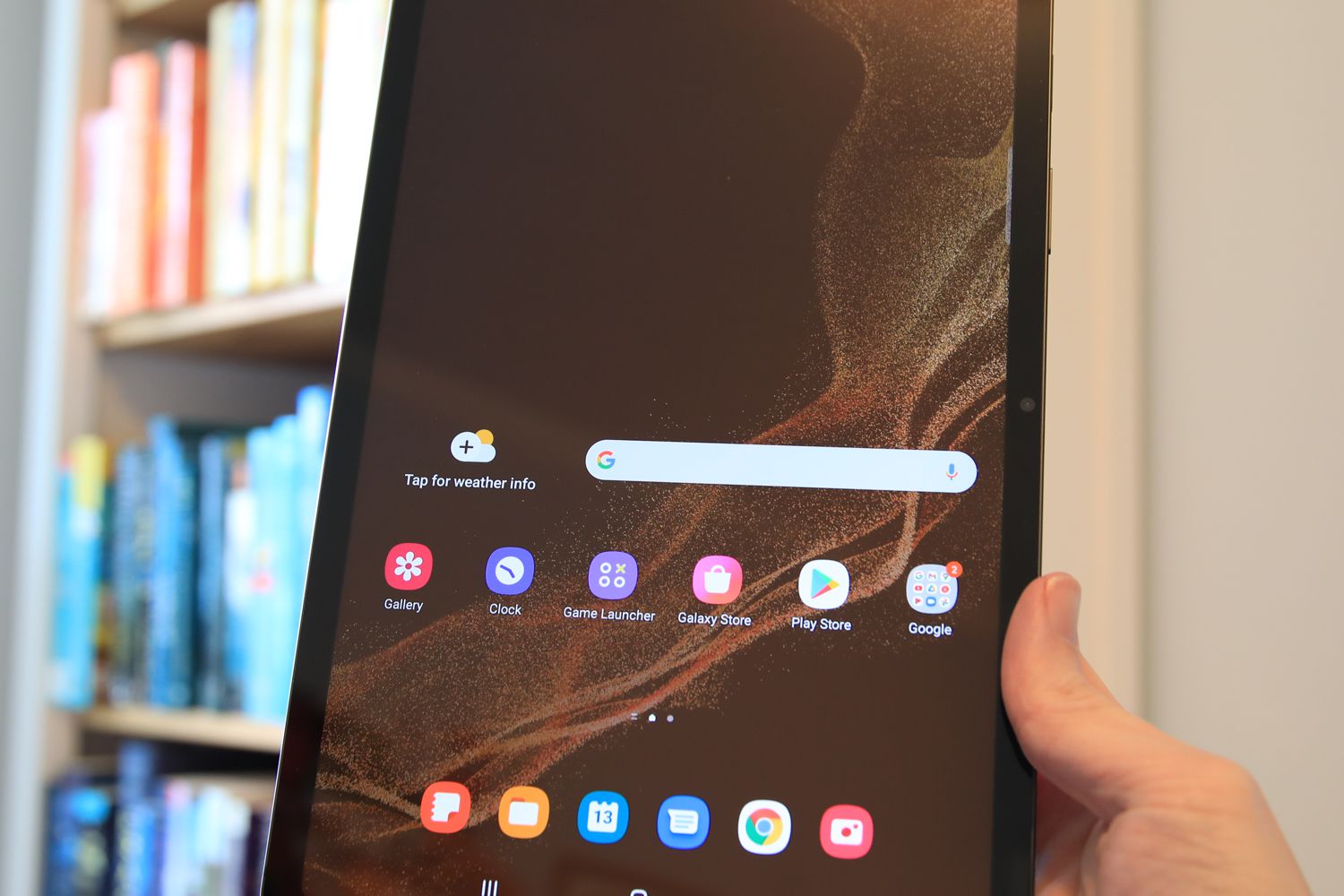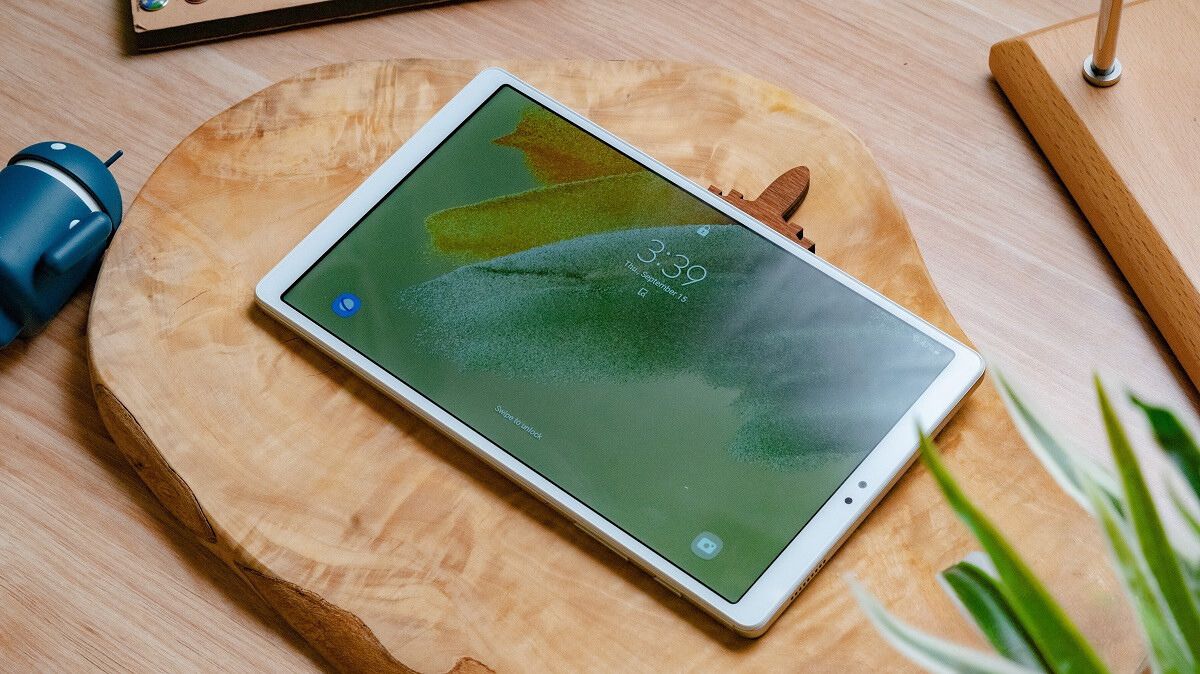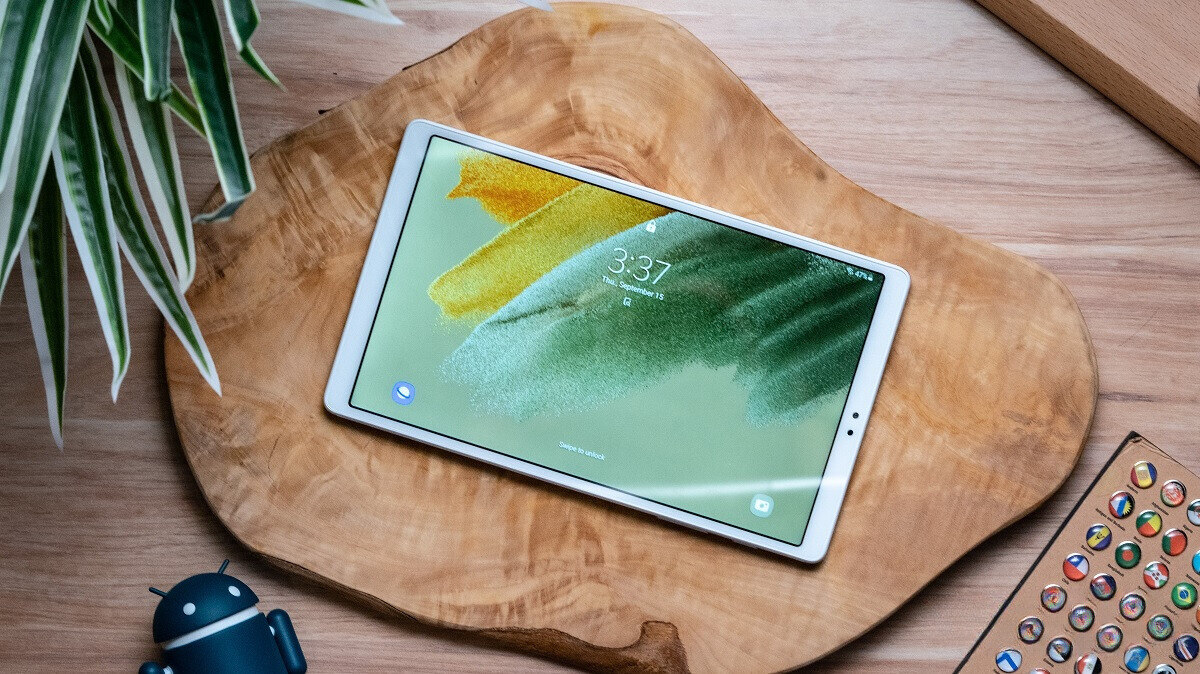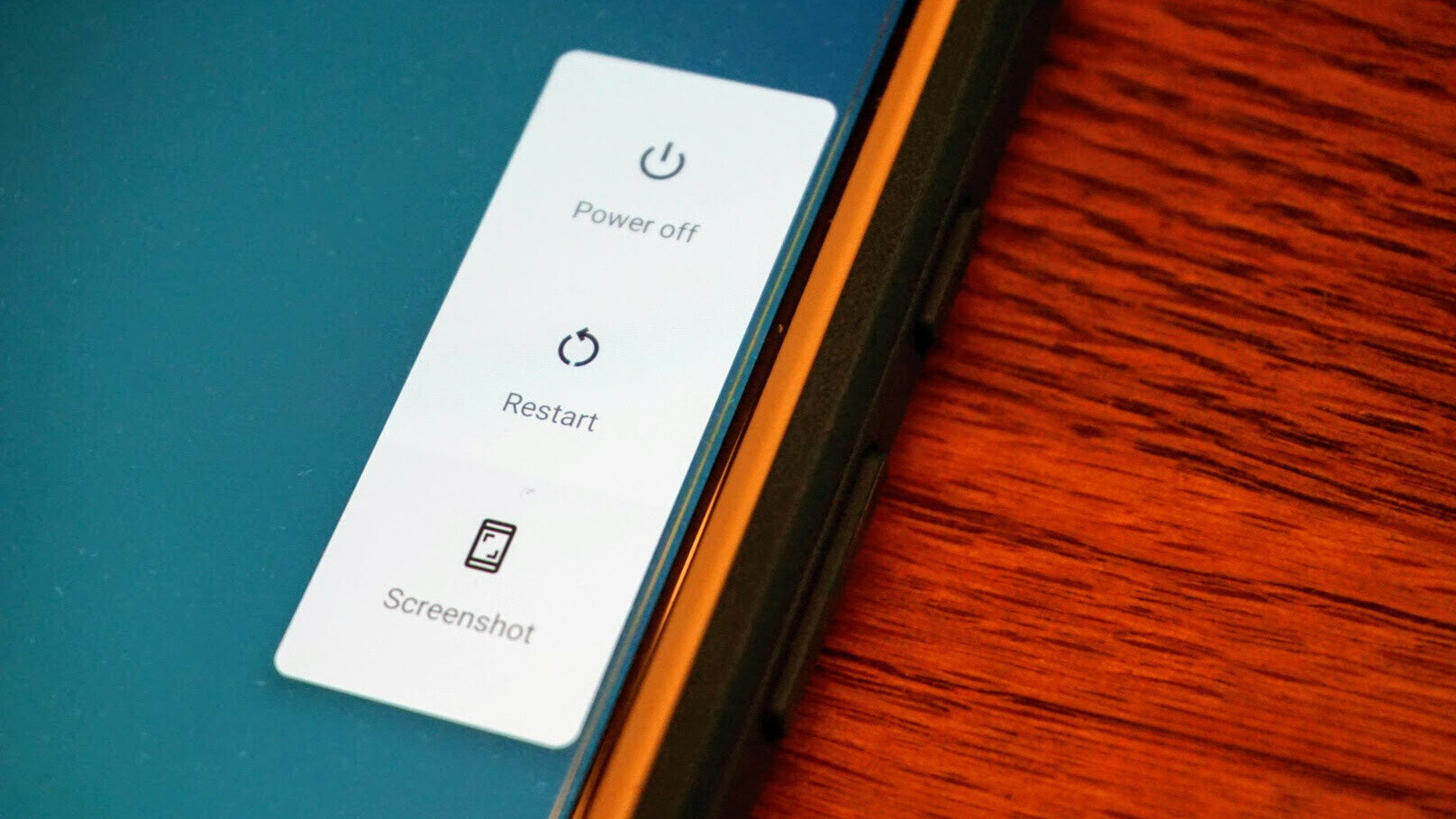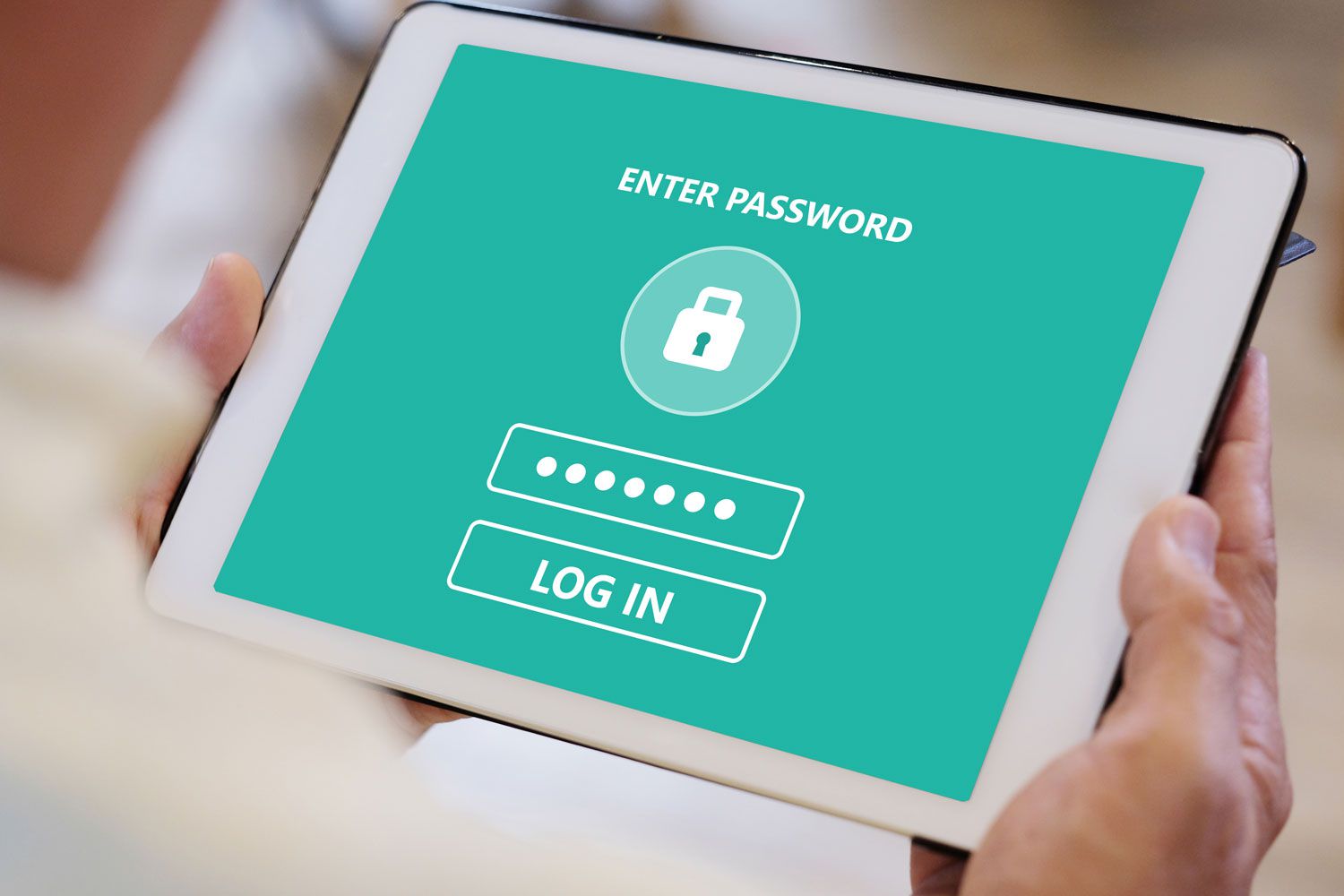Introduction
Welcome to the world of Android tablets! These versatile devices have become an essential part of our lives, offering us a powerful combination of functionality and portability. However, there may come a time when you need to reset your Android tablet to its factory settings. Whether you’re experiencing software issues, want to sell or give away the tablet, or simply want to start fresh, knowing how to reset your Android tablet is a vital skill.
In this article, we’ll explore various methods of resetting an Android tablet, ensuring that you can choose the most suitable option for your specific needs. We’ll guide you through the process step-by-step and provide troubleshooting tips along the way. So, let’s dive in and discover how you can reset an Android tablet without breaking a sweat.
Before we jump into the different reset options, it’s important to understand why you might need to reset your Android tablet. There are various reasons that may prompt you to take this step. Firstly, if your tablet is experiencing performance issues such as lagging, freezing, or crashing, a factory reset can often help resolve these software-related problems. Additionally, if you’re selling or giving away your tablet, resetting it will erase all your personal data, ensuring a clean slate for the new user.
Another common scenario where you might need to reset your Android tablet is if you’ve forgotten your unlock pattern or PIN code. In such cases, a factory reset is often the only way to regain access to your device. It’s important to note, however, that a factory reset will erase all your data, so it’s crucial to have a backup in place before proceeding.
Now that we understand the reasons why you might need to reset your Android tablet, let’s move on to the next section, where we’ll discuss the importance of backing up your data before performing a reset.
Reasons for Resetting an Android Tablet
There are several reasons why you might need to reset your Android tablet. Understanding these reasons will help you determine whether a reset is necessary and which method to use. Here are some common scenarios that may lead to a tablet reset:
1. Performance Issues: Over time, your Android tablet may start to exhibit performance problems such as slow response times, frequent app crashes, or excessive lag. These issues can be frustrating and hinder your productivity. Performing a factory reset can often resolve these software-related problems, giving your tablet a fresh start and improving its performance.
2. Selling or Giving Away: If you’re planning to sell or give away your tablet, resetting it to its factory settings is crucial to protect your personal data. By performing a reset, you’ll ensure that all your sensitive information, such as passwords, photos, and documents, are completely erased from the device. It’s important to note that a regular data wipe may not be sufficient, as certain files can still be recovered using specialized tools. A factory reset is the most secure way to ensure that your data is permanently deleted.
3. Forgotten Unlock Pattern or PIN: It’s not uncommon to forget the unlock pattern or PIN code for your tablet, especially if you haven’t used it for a while. In this situation, a factory reset is often the only way to regain access to your device. However, it’s important to note that performing a reset will erase all your data, so it’s crucial to have a backup in place to prevent data loss.
4. Malware or Security Breach: If you suspect that your tablet has been infected with malware or if you’ve experienced a security breach, a factory reset can help eliminate any potential threats. By resetting the tablet, you’ll remove any malicious software or unauthorized access, ensuring a secure and clean device.
5. Starting Fresh: Sometimes, you may simply want to start fresh with your Android tablet. This could be due to a cluttered interface, an overwhelming number of installed apps, or simply a desire for a clean slate. Performing a factory reset will remove all apps, settings, and personal data, allowing you to customize your tablet from scratch.
Now that you understand the various reasons for resetting an Android tablet, it’s important to proceed with caution. Before performing any reset, it’s crucial to back up your data to prevent permanent data loss. In the next section, we’ll discuss the importance of data backup and how to do it effectively.
Before Resetting: Backup your Data
Before you proceed with resetting your Android tablet, it’s essential to back up your data to ensure that no valuable information is lost during the process. Whether it’s photos, videos, contacts, or important documents, creating a backup will provide you with peace of mind and make it easier to restore your data after the reset. Here are some steps to follow when backing up your data:
1. Use Cloud Storage: One of the easiest and most convenient ways to back up your data is by using cloud storage services such as Google Drive, Dropbox, or OneDrive. These services offer free storage space and allow you to automatically sync your files to the cloud. Simply install their respective apps, sign in with your account, and select the folders or files you want to back up. Once your data is uploaded to the cloud, it will be safely stored and can be accessed from any device with an internet connection.
2. Transfer Files to a Computer: If you prefer to have a physical copy of your data, you can transfer your files to a computer using a USB cable. Connect your tablet to the computer and select the option to “Transfer Files” or “MTP” mode. Once the connection is established, navigate to the tablet’s storage and locate the files you want to back up. Simply copy and paste or drag and drop the files to a folder on your computer. Make sure you organize your files in a way that makes it easy to restore them later.
3. Sync Contacts and Calendars: To ensure that your contacts and calendars are backed up, make sure they are synced with your Google account. Open the Settings app on your tablet, go to “Accounts” or “Accounts and Sync,” and select your Google account. Enable syncing for Contacts and Calendar. This will ensure that your contacts and calendar events are backed up and can be easily restored on your tablet after the reset.
4. Export App Data: Some apps store important data locally on your tablet. Before resetting, check if any of your apps have an option to export or back up their data. This could include notes, saved game progress, or app settings. Each app may have a different method for exporting data, so refer to the app’s settings or documentation for specific instructions. Remember to save the exported data to a safe location, such as cloud storage or your computer.
5. Take Note of Wi-Fi Passwords: After the reset, you’ll need to reconnect your tablet to Wi-Fi networks. It’s a good idea to make a note of the Wi-Fi passwords for any networks you regularly connect to. You can either write them down or use a password manager app to securely store the passwords.
By following these steps to back up your data, you can proceed with confidence knowing that your important files and information are safely stored. In the next sections, we’ll explore different methods for resetting an Android tablet, so you can choose the one that suits your needs.
Option 1: Factory Reset from Settings
Performing a factory reset from the settings menu is one of the simplest and most straightforward methods to reset your Android tablet. This method is recommended when you have access to your tablet and can navigate through the settings. Here’s how you can proceed:
1. Open the Settings App: Start by opening the Settings app on your Android tablet. You can usually find it in the app drawer or by swiping down from the top of the screen and tapping the gear icon.
2. Navigate to the Reset Option: In the Settings menu, scroll down and look for the “System” or “System & Updates” category. Tap on it to find the option that says “Reset” or “Reset options.”
3. Choose Factory Reset: Within the Reset options, you’ll typically find a few different reset choices. Look for the option that says “Factory Reset,” “Erase all data,” or something similar. Tap on it to proceed.
4. Confirm the Reset: After selecting the factory reset option, a confirmation screen will appear. This screen will warn you that all your data will be erased, and your tablet will be restored to its original factory settings. Take a moment to review the information and ensure that you have performed a backup of your important files. When you’re ready to proceed, tap on “Reset” or “Erase” to initiate the factory reset process.
5. Wait for the Reset to Complete: The factory reset process may take a few minutes to complete. During this time, your tablet will restart and go through the reset procedure. Follow any on-screen instructions that may appear, but be aware that you may not have access to your tablet’s normal features until the reset is finished.
6. Set Up Your Tablet: Once the reset is complete, your tablet will start up as if it were brand new. You’ll be guided through the initial setup process, including language selection, Wi-Fi connection, and Google account sign-in. Follow the prompts and enter the necessary information to get your tablet up and running again.
It’s important to note that performing a factory reset will erase all your data, including apps, settings, contacts, and files. Therefore, be sure to have a backup of your data beforehand. If you’re experiencing serious software issues or forget your password, and cannot access the settings menu, you may need to consider alternative methods for resetting your tablet, which we’ll explore in the following sections.
Option 2: Factory Reset using Hardware Buttons
If you’re unable to access the settings menu on your Android tablet or experiencing software issues, performing a factory reset using hardware buttons can be a useful alternative. This method allows you to initiate the reset process without accessing the tablet’s operating system. Here’s how you can do it:
1. Power Off Your Tablet: Start by powering off your tablet. Press and hold the Power button until the power options menu appears. From there, select “Power off” or a similar option to turn off your tablet completely.
2. Locate the Hardware Buttons: Different tablet models may have different combinations of hardware buttons. Commonly, you’ll need to press and hold a combination of the Power button and Volume Up or Volume Down buttons simultaneously. Refer to your tablet’s user manual or manufacturer’s website to find the correct button combination for your specific model.
3. Enter Recovery Mode: Once you’ve located the correct button combination, press and hold those buttons together. After a few seconds, your tablet should enter Recovery Mode. Depending on the tablet model, you may see an Android logo or a specific recovery mode menu on the screen.
4. Navigate the Recovery Menu: In the Recovery Mode menu, you’ll typically have to use the Volume Up and Volume Down buttons to navigate through the options. Look for an option that says “Wipe data/factory reset,” “Factory Reset,” or something similar. Use the volume buttons to highlight the option, and the Power button to select it.
5. Confirm the Reset: After selecting the factory reset option, you’ll be presented with a confirmation screen. This screen will warn you that all your data will be erased, and your tablet will be restored to its original factory settings. Take a moment to double-check if you have backed up your important files. When ready, use the volume buttons to navigate to the “Yes” or “Confirm” option, and press the Power button to initiate the factory reset procedure.
6. Wait for the Reset to Complete: The factory reset process may take a few minutes to complete. Your tablet will go through the reset procedure, and you may see a progress bar or other indicators on the screen. Be patient and avoid interrupting the process to prevent any potential issues.
7. Reboot Your Tablet: Once the reset is complete, you’ll usually see an option to reboot your tablet. Use the volume buttons to navigate to the “Reboot system now” or similar option, and press the Power button to restart your tablet.
Upon rebooting, your tablet will be restored to its original factory settings. You’ll need to go through the initial setup process, including language selection, Wi-Fi connection, and Google account sign-in, just like when you first got the tablet. Remember to have a backup of your data before performing a factory reset, as this method will erase all your personal files and settings.
Option 3: Reset using Android Device Manager
If you’ve misplaced your Android tablet or it has been stolen, you can still perform a factory reset remotely using the Android Device Manager. This method allows you to erase all the data on your tablet from any computer or smartphone with an internet connection. Here’s how you can reset your Android tablet using Android Device Manager:
1. Access Android Device Manager: Open a web browser on your computer or smartphone and go to the Android Device Manager website (https://www.google.com/android/find). Sign in using the same Google account that is linked to your tablet.
2. Select Your Tablet: Once you’re signed in, you’ll see a list of devices associated with your Google account. Locate your tablet from the list and click on it to proceed.
3. Enable Erase Option: In the Android Device Manager interface, you’ll find various options to track, ring, or lock your tablet. Look for the “Erase” option and click on it. This will initiate the factory reset process on your tablet.
4. Confirm the Reset: A confirmation dialog box will appear, informing you that all data on your tablet will be erased. Take a moment to ensure that you have created a backup of any important files. To confirm the reset, click on the “Erase” button.
5. Wait for the Reset to Complete: The erase command will be sent to your tablet, and the factory reset process will begin. This process may take a few minutes to complete. During this time, your tablet will be disconnected from the internet.
6. Check the Status: Once the reset is initiated, you can check the status of the process in the Android Device Manager interface. It will display whether the erase command was successful or not. Keep in mind that a stable internet connection is necessary for the command to reach your tablet.
7. Set Up Your Tablet: After the reset is complete, your tablet will be restored to its original factory settings. When you turn on your tablet, you’ll need to go through the initial setup process just like when you first got the device. Follow the on-screen instructions to select a language, connect to Wi-Fi, and sign in with your Google account.
It’s important to note that the Android Device Manager method only works if your tablet is connected to the internet. Additionally, this method will erase all data on your tablet, so it’s crucial to have a backup of your files before initiating the reset. This option is primarily useful when you’ve lost your tablet or it has been stolen, allowing you to protect your personal information by remotely wiping the device.
Option 4: Reset using Recovery Mode
If you’re experiencing serious software issues with your Android tablet or need to perform a more advanced reset, using the Recovery Mode is an effective option. This method allows you to access a dedicated system recovery menu where you can perform a factory reset and tackle various troubleshooting tasks. Here’s how to reset your Android tablet using Recovery Mode:
1. Power Off Your Tablet: Start by turning off your tablet. Depending on your device, you can either hold down the Power button and select the “Power off” option from the menu, or press and hold the Power button until the tablet shuts down completely.
2. Enter Recovery Mode: To enter Recovery Mode, you’ll need to press and hold a specific combination of hardware buttons. The buttons required may vary depending on your tablet model, so refer to the tablet’s user manual or manufacturer’s website for the correct combination. Typically, it involves holding the Power button and Volume Up or Volume Down button simultaneously.
3. Navigate the Recovery Menu: Once you’ve entered Recovery Mode, you’ll see a menu with various options. Use the Volume Up and Volume Down buttons to navigate through the menu options, and use the Power button to select an option. Look for an option like “Wipe data/factory reset,” “Factory Reset,” or similar.
4. Confirm the Reset: After selecting the factory reset option, a confirmation prompt will appear. This prompt reminds you that all data on your tablet will be erased. Take a moment to ensure that you’ve backed up your essential files. To confirm the reset, select “Yes” or “Confirm” using the volume buttons and Power button.
5. Wait for the Reset to Complete: The factory reset process may take some time to complete. You’ll see a progress indicator on the screen, and the tablet may reboot multiple times. Be patient and avoid interrupting the process. Once the reset is finished, you’ll be taken back to the recovery menu.
6. Reboot Your Tablet: From the recovery menu, select the option to “Reboot system now.” This will restart your tablet and take you to the initial setup screen, just like when you first got the device. Follow the on-screen instructions to set up your tablet, including language selection, Wi-Fi connection, and Google account sign-in.
Using Recovery Mode to reset your Android tablet gives you a more advanced level of control over the reset process and can be helpful for troubleshooting complex issues. However, keep in mind that performing a factory reset through Recovery Mode will erase all your data, so it’s essential to have a backup beforehand. If you’re uncertain about the steps or unfamiliar with Recovery Mode, it may be best to seek guidance from the tablet’s manufacturer or a professional technician.
Common Issues and Troubleshooting
While resetting an Android tablet can often resolve various software-related problems, it’s essential to identify common issues and troubleshoot them before resorting to a factory reset. Here are some common issues you might encounter and potential troubleshooting steps:
1. Slow Performance or Lagging: If your tablet is experiencing slow performance or lagging, try clearing cached data. Go to the Settings app, navigate to “Storage” or “Storage & memory,” and select “Cached data.” Tap on “Clear cached data” to free up space and potentially improve performance. If the problem persists, consider uninstalling unused apps or performing a factory reset.
2. App Crashes or Freezing: If certain apps on your tablet are crashing or freezing frequently, start by force stopping the app from the Settings app under “Apps” or “Applications.” Clearing the app’s cache or reinstalling it may also help resolve the issue. If multiple apps are causing problems, a factory reset can provide a clean slate and resolve any underlying software conflicts.
3. Wi-Fi Connection Issues: If you’re having trouble connecting to Wi-Fi networks, try rebooting your tablet and router. Verify that you’ve entered the correct Wi-Fi password, check if airplane mode is turned off, and ensure that your tablet is within range of the Wi-Fi signal. If the problem persists, you can try “forgetting” the Wi-Fi network and reconnecting to it or resetting your network settings from the tablet’s settings app under “Network & Internet” or “Connections.”
4. Battery Drainage: If your tablet’s battery drains quickly, check for battery-draining apps by going to the Settings app and navigating to “Battery” or “Battery & performance.” Identify any apps that consume a significant amount of power and consider uninstalling or restricting their background activity. Adjusting the screen brightness, disabling unused features, and enabling battery-saving modes can also help improve battery life.
5. Forgotten Unlock Pattern or PIN: If you’ve forgotten your tablet’s unlock pattern or PIN, you can try unlocking it using your Google account credentials. On the lock screen, tap on “Forgot pattern” or “Forgot PIN.” Follow the on-screen instructions to enter your Google account details and regain access to your tablet. If this method doesn’t work, you may need to perform a factory reset using one of the methods mentioned earlier.
6. System Software Update Issues: If you’re having trouble updating your tablet’s system software, ensure that your tablet has a stable internet connection and sufficient storage space. Restarting your tablet and checking for software updates in the settings app under “System” or “System & Updates” may also help. If the problem persists, you can try updating the software using your computer and the manufacturer’s official software update tool.
If you’re not comfortable troubleshooting or the issue persists even after attempting troubleshooting steps, it may be necessary to perform a factory reset as a final solution. Remember to back up your data before resetting the tablet to avoid permanent data loss. If the problem continues after the factory reset, it’s recommended to seek assistance from the tablet’s manufacturer or a professional technician.
Conclusion
Resetting an Android tablet can be a valuable troubleshooting step when you encounter software issues, want to sell or give away your device, or simply wish to start fresh. Throughout this article, we have explored several methods to reset an Android tablet, including factory resetting from the settings, using hardware buttons, employing Android Device Manager, and utilizing Recovery Mode.
Before initiating a factory reset, it is crucial to back up your data to prevent permanent data loss. Cloud storage services, transferring files to a computer, and syncing contacts and calendars are effective methods for creating backups. Additionally, taking note of Wi-Fi passwords and exporting app data can aid in restoring your tablet to its previous state after the reset.
If your tablet is accessible, resetting it from the settings menu is the simplest method. However, if you are unable to access the settings or facing software issues, you can opt for a factory reset using hardware buttons or utilize the Android Device Manager to remotely reset your tablet.
For more advanced troubleshooting and comprehensive system resets, Recovery Mode provides the necessary tools and options to perform a factory reset. However, caution must be exercised as it erases all data on the tablet.
Remember, it is essential to troubleshoot common issues before resorting to a factory reset. Slow performance, app crashes, Wi-Fi connection problems, battery drainage, forgotten unlock patterns or PINs, and system software update issues can often be resolved through troubleshooting steps.
In summary, resetting an Android tablet is a useful feature that allows you to resolve software issues, protect your personal data when selling or giving away the device, or start afresh. By following the appropriate methods and taking necessary precautions, you can ensure a successful reset and restore your tablet to a clean and optimized state.







